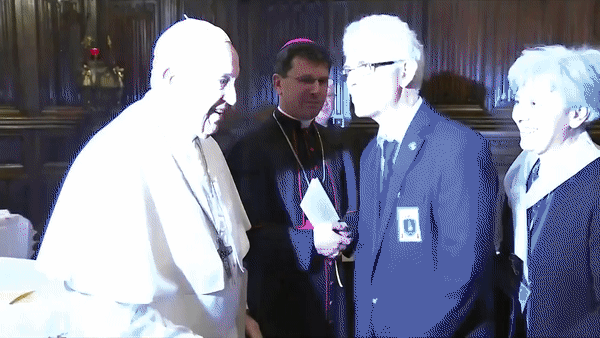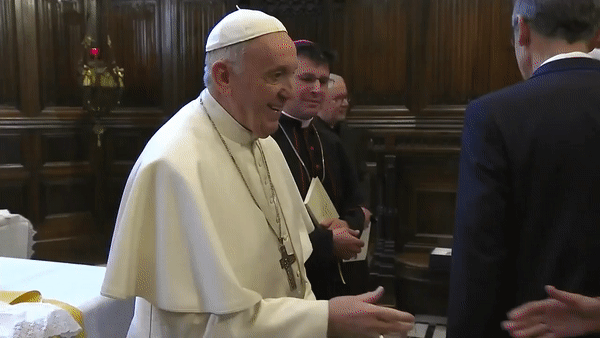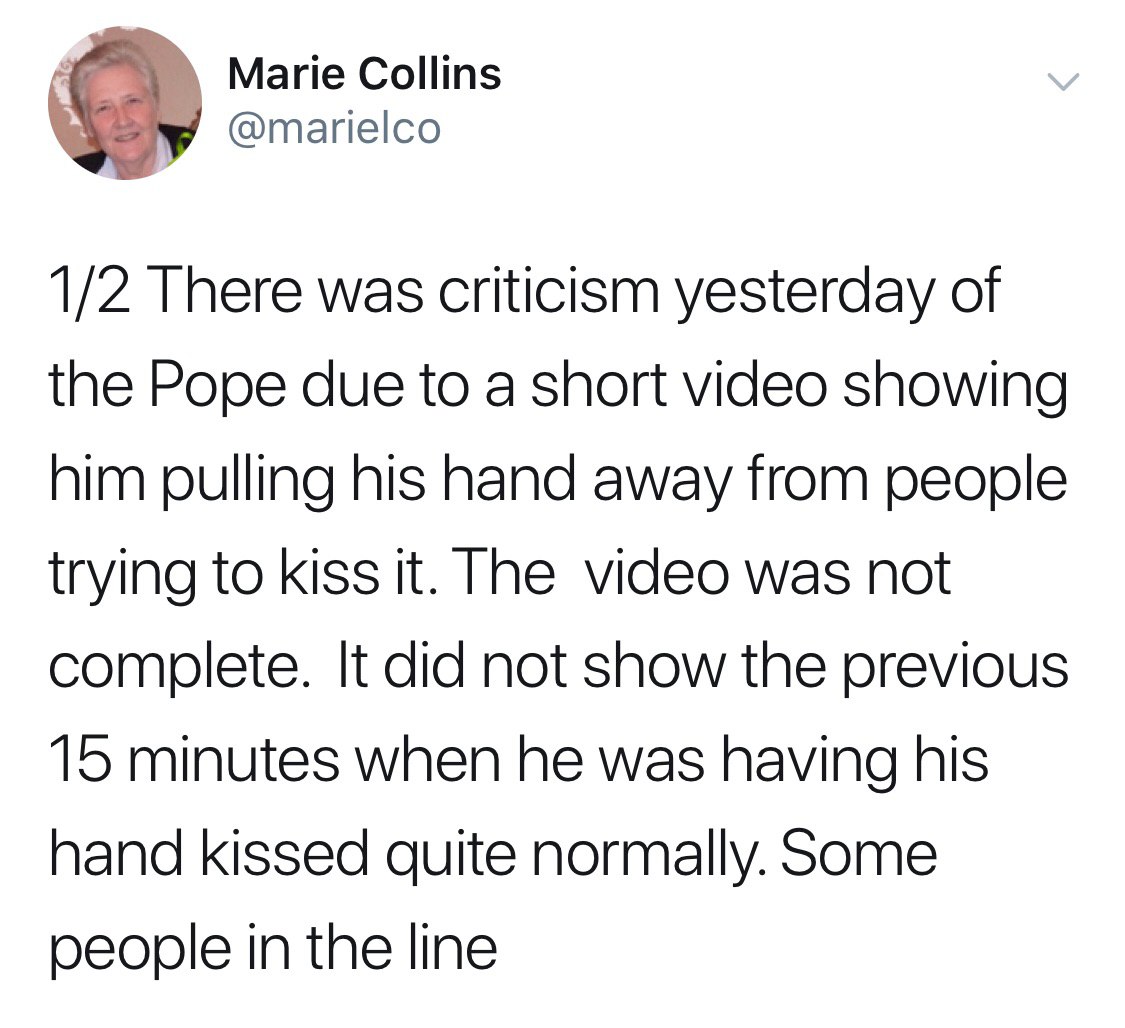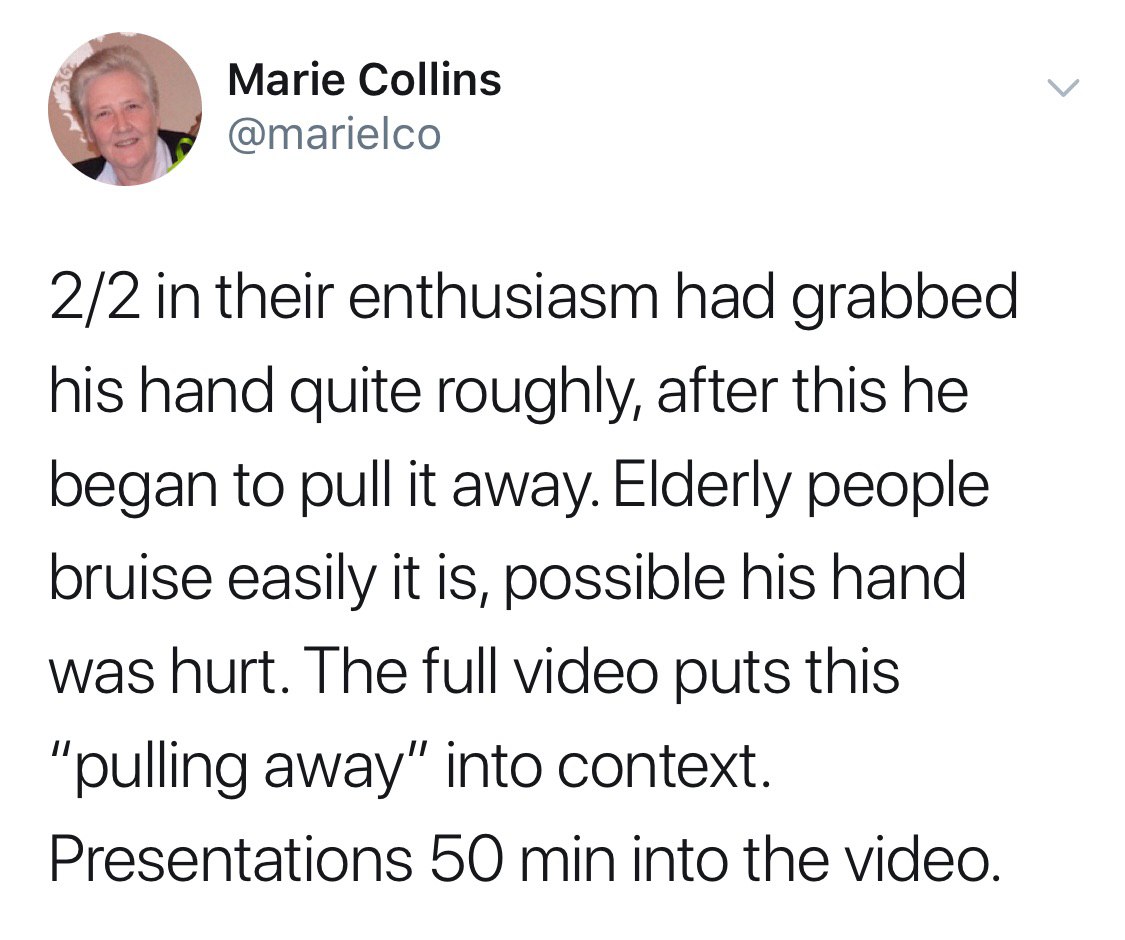Pope Francis does not enjoy people kissing his hand and his papal ring.
At least that seems to be the case if this following viral video trending online is anything to go by:
Pope Francis really doesn't want anyone kissing his ring.
— Catholic Sat (@CatholicSat) March 25, 2019
This from today, after Mass ... pic.twitter.com/CZUO8ppNfo
Divine rejection
The video, which comes from the Pope’s recent visit to Loreto, Marche (not the restaurant but a region in Italy), on March 25, features the leader the Catholic Church repeatedly pulling his right hand away from devotees seeking to kiss his papal ring.
Here’s one highlight:
 You snooze you lose apparently.
You snooze you lose apparently.
Here's a savage speed round of rejections:
 "TRIPLE KILL"
"TRIPLE KILL"
Disturbing the conservatives
However, the Pope’s game of "sike" didn’t impress everyone.
As Reuters reported, it’s the latest point of difference in what’s known as the Catholic cultural war between conservatives and progressives.
A conservative Catholic news website labelled the video as “disturbing”, while Rorate Caeli a conservative blog tweeted that it was “monstrous to deny” Catholics the chance to kiss the ring.
If he did it, then he was also wrong. But,if he did it, he was never so conspicuous about it,as if he hated the very notion of it.
— Rorate Caeli (@RorateCaeli) March 26, 2019
These people are not kissing Jorge Mario Bergoglio, they want to kiss Peter, the Vicar of Christ. It's monstrous to deny them that. https://t.co/UofR3ZcGja
Why all this fuss over the ring?
It’s a good question.
According to The Washington Post, kissing the papal ring, a.k.a. Ring of the Fisherman, has traditionally been a gesture of respect for the Pope’s authority.
In fact, it’s not just limited to the pope -- devout Catholics have traditionally kissed the hands or rings of bishops, cardinals, and priests too.
The act has also been associated with the dispensation of indulgences, which according to the Encyclopaedia Britannica, is the granting of “full or partial remission of the punishment of sin”.
Taylor Marshall, a Catholic author and traditionalist, has also detailed in a YouTube video how kissing the ring of a clergyman may grant you an indulgence.
According to Marshall, who quotes the Raccolta -- a traditional Catholic manual of indulgences -- kissing the ring of a pope grants you an indulgence of 300 days.
Historically, that could mean 300 days off from purgatory -- which in medieval Roman Catholicism was a place where Catholics were punished for their sins before they could enter heaven.
Or, according to Marshall, 300 days of penance, which Catholic.sg vaguely describes as “a joyful response to the gift of God’s life”.
Either way, that’s a lot of days.
So, was Pope Francis being selfish?
Isn’t it sad that the Pope actually visibly refused to grant his followers indulgences?
Did he look into their eyes and deem them unrepentant and unworthy?
Maybe not.
To start with, it’s important to note that Francis did allow people to kiss his ring that very same day before the viral video showed him pulling his hand away.
The one minute of brutal kiss rejections above had actually been preceded by about 10 minutes of tender kiss acceptance.
 "300 days for you, and 300 days for you."
"300 days for you, and 300 days for you."
You can watch the full video of the proceedings here (the greetings start at about the 63-minute mark):
The BBC reported that the Pope let 41 people indulge (see what I did there) in the kissing of his ring without protest.
So, why the rejections then?
There are a few theories.
The BBC's theory seems to be that Francis was trying to blaze through the last few people in the line to greet him and move on to greet others who were waiting at the front of the church, many of whom were in wheelchairs.
Marie Collins, an Irish survivor of sexual abuse who was a member of the pope’s Commission for the Protection of Minors, tweeted her theory:


Medieval church history scholar Christopher Bellitto, who was speaking to The Washington Post, argued that the tradition of kissing the Pope’s ring is not a part of formal papal protocol, but rather a practice associated with greeting kings, queens, and emperors.
Francis’ ring-kiss-rejection could, therefore, be seen as an effort to establish a humbler relationship between Pope and people.
John Allen, a veteran Vatican journalist and editor of the online Catholic news site Crux, who was also speaking to The Washington Post, agreed saying that it was in line with the modern day papal trend to “dial down the tradition of subservience”.
An aide to the Pope told Reuters that "sometimes he likes it, sometimes he does not. It’s really as simple as that," while adding that Francis was "amused" by the reaction.
Divide over Francis
Whatever the Pope's true reasons for his seeming rejection of the ring-kiss, the incident does highlight a fault line amongst Catholics engaged in the aforementioned Catholic cultural war -- since his rise to the highest office in Catholicism, Pope Francis has been a polarising figure.
Predictably, conservatives have criticised the Pope for the way that he seems to shrug traditions, while progressives have praised his efforts to foster inclusiveness and eradicate poverty.
They've even argued over Francis' fashion decisions.
An article by Vox details how the current Pope's choice of clothing has gone against the traditional decorum that was routinely followed by his predecessor.
One notable incident was his unveiling, where Francis refused to don the Mozzetta -- a red cape customarily won by the Pope at certain ceremonies.
However, the biggest point of contention seems to be over the Pope's views on divorcees.
Another Vox article describes how much of the debate "centres around Francis’s tacit approval of parish priests giving communion to divorced-and-remarried couples".
In any case, this divide amongst Catholics is unlikely to find a truce anytime soon, as the Church continues to figure out how it will remain relevant under increasing pressure to evolve.
Supporters who believe that change within the church is greatly needed are likely to continue cheering on the Pope seen by many to be a reformer, all the while facing push back from conservatives wishing to maintain the traditions.
Top image screenshot from Vatican News YouTube
If you like what you read, follow us on Facebook, Instagram, Twitter and Telegram to get the latest updates.
